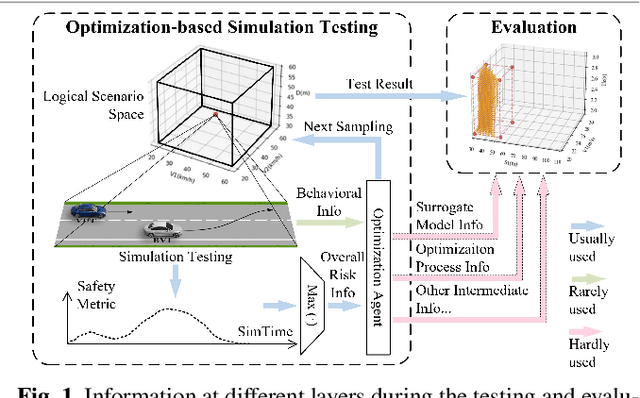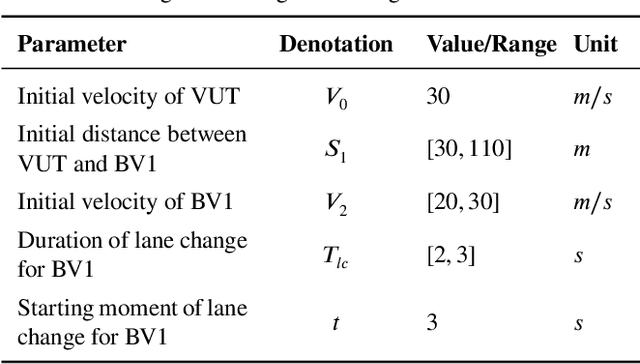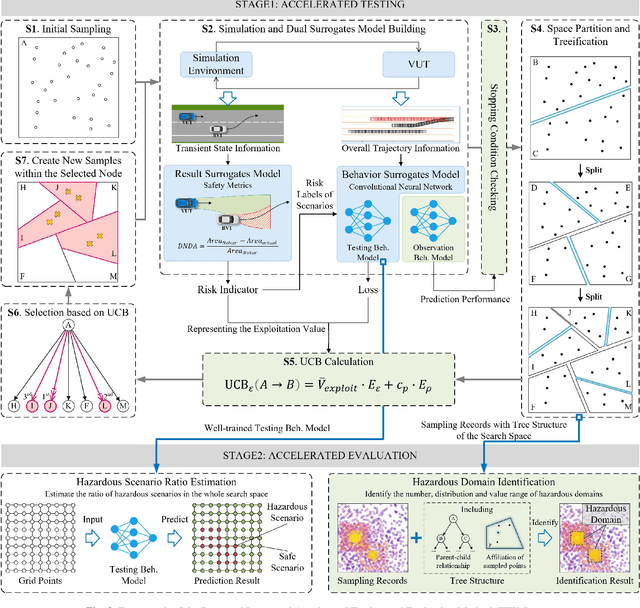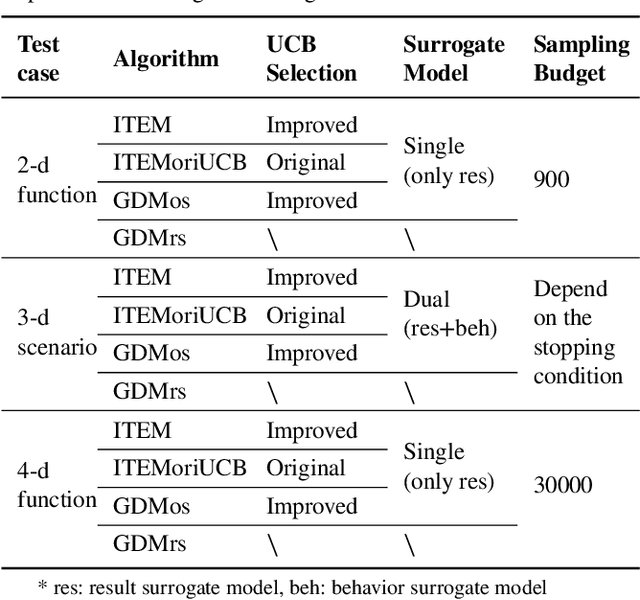Tian Xia
BrainMCLIP: Brain Image Decoding with Multi-Layer feature Fusion of CLIP
Oct 22, 2025Abstract:Decoding images from fMRI often involves mapping brain activity to CLIP's final semantic layer. To capture finer visual details, many approaches add a parameter-intensive VAE-based pipeline. However, these approaches overlook rich object information within CLIP's intermediate layers and contradicts the brain's functionally hierarchical. We introduce BrainMCLIP, which pioneers a parameter-efficient, multi-layer fusion approach guided by human visual system's functional hierarchy, eliminating the need for such a separate VAE pathway. BrainMCLIP aligns fMRI signals from functionally distinct visual areas (low-/high-level) to corresponding intermediate and final CLIP layers, respecting functional hierarchy. We further introduce a Cross-Reconstruction strategy and a novel multi-granularity loss. Results show BrainMCLIP achieves highly competitive performance, particularly excelling on high-level semantic metrics where it matches or surpasses SOTA(state-of-the-art) methods, including those using VAE pipelines. Crucially, it achieves this with substantially fewer parameters, demonstrating a reduction of 71.7\%(Table.\ref{tab:compare_clip_vae}) compared to top VAE-based SOTA methods, by avoiding the VAE pathway. By leveraging intermediate CLIP features, it effectively captures visual details often missed by CLIP-only approaches, striking a compelling balance between semantic accuracy and detail fidelity without requiring a separate VAE pipeline.
Decoupled Classifier-Free Guidance for Counterfactual Diffusion Models
Jun 17, 2025Abstract:Counterfactual image generation aims to simulate realistic visual outcomes under specific causal interventions. Diffusion models have recently emerged as a powerful tool for this task, combining DDIM inversion with conditional generation via classifier-free guidance (CFG). However, standard CFG applies a single global weight across all conditioning variables, which can lead to poor identity preservation and spurious attribute changes - a phenomenon known as attribute amplification. To address this, we propose Decoupled Classifier-Free Guidance (DCFG), a flexible and model-agnostic framework that introduces group-wise conditioning control. DCFG builds on an attribute-split embedding strategy that disentangles semantic inputs, enabling selective guidance on user-defined attribute groups. For counterfactual generation, we partition attributes into intervened and invariant sets based on a causal graph and apply distinct guidance to each. Experiments on CelebA-HQ, MIMIC-CXR, and EMBED show that DCFG improves intervention fidelity, mitigates unintended changes, and enhances reversibility, enabling more faithful and interpretable counterfactual image generation.
Diffusion Counterfactual Generation with Semantic Abduction
Jun 09, 2025Abstract:Counterfactual image generation presents significant challenges, including preserving identity, maintaining perceptual quality, and ensuring faithfulness to an underlying causal model. While existing auto-encoding frameworks admit semantic latent spaces which can be manipulated for causal control, they struggle with scalability and fidelity. Advancements in diffusion models present opportunities for improving counterfactual image editing, having demonstrated state-of-the-art visual quality, human-aligned perception and representation learning capabilities. Here, we present a suite of diffusion-based causal mechanisms, introducing the notions of spatial, semantic and dynamic abduction. We propose a general framework that integrates semantic representations into diffusion models through the lens of Pearlian causality to edit images via a counterfactual reasoning process. To our knowledge, this is the first work to consider high-level semantic identity preservation for diffusion counterfactuals and to demonstrate how semantic control enables principled trade-offs between faithful causal control and identity preservation.
* Proceedings of the 42nd International Conference on Machine Learning, Vancouver, Canada
Facilitating Long Context Understanding via Supervised Chain-of-Thought Reasoning
Feb 18, 2025Abstract:Recent advances in Large Language Models (LLMs) have enabled them to process increasingly longer sequences, ranging from 2K to 2M tokens and even beyond. However, simply extending the input sequence length does not necessarily lead to effective long-context understanding. In this study, we integrate Chain-of-Thought (CoT) reasoning into LLMs in a supervised manner to facilitate effective long-context understanding. To achieve this, we introduce LongFinanceQA, a synthetic dataset in the financial domain designed to improve long-context reasoning. Unlike existing long-context synthetic data, LongFinanceQA includes intermediate CoT reasoning before the final conclusion, which encourages LLMs to perform explicit reasoning, improving accuracy and interpretability in long-context understanding. To generate synthetic CoT reasoning, we propose Property-driven Agentic Inference (PAI), an agentic framework that simulates human-like reasoning steps, including property extraction, retrieval, and summarization. We evaluate PAI's reasoning capabilities by assessing GPT-4o-mini w/ PAI on the Loong benchmark, outperforming standard GPT-4o-mini by 20.0%. Furthermore, we fine-tune LLaMA-3.1-8B-Instruct on LongFinanceQA, achieving a 24.6% gain on Loong's financial subset.
The Danger of Overthinking: Examining the Reasoning-Action Dilemma in Agentic Tasks
Feb 12, 2025Abstract:Large Reasoning Models (LRMs) represent a breakthrough in AI problem-solving capabilities, but their effectiveness in interactive environments can be limited. This paper introduces and analyzes overthinking in LRMs. A phenomenon where models favor extended internal reasoning chains over environmental interaction. Through experiments on software engineering tasks using SWE Bench Verified, we observe three recurring patterns: Analysis Paralysis, Rogue Actions, and Premature Disengagement. We propose a framework to study these behaviors, which correlates with human expert assessments, and analyze 4018 trajectories. We observe that higher overthinking scores correlate with decreased performance, with reasoning models exhibiting stronger tendencies toward overthinking compared to non-reasoning models. Our analysis reveals that simple efforts to mitigate overthinking in agentic environments, such as selecting the solution with the lower overthinking score, can improve model performance by almost 30% while reducing computational costs by 43%. These results suggest that mitigating overthinking has strong practical implications. We suggest that by leveraging native function-calling capabilities and selective reinforcement learning overthinking tendencies could be mitigated. We also open-source our evaluation framework and dataset to facilitate research in this direction at https://github.com/AlexCuadron/Overthinking.
Nearly Lossless Adaptive Bit Switching
Feb 03, 2025



Abstract:Model quantization is widely applied for compressing and accelerating deep neural networks (DNNs). However, conventional Quantization-Aware Training (QAT) focuses on training DNNs with uniform bit-width. The bit-width settings vary across different hardware and transmission demands, which induces considerable training and storage costs. Hence, the scheme of one-shot joint training multiple precisions is proposed to address this issue. Previous works either store a larger FP32 model to switch between different precision models for higher accuracy or store a smaller INT8 model but compromise accuracy due to using shared quantization parameters. In this paper, we introduce the Double Rounding quantization method, which fully utilizes the quantized representation range to accomplish nearly lossless bit-switching while reducing storage by using the highest integer precision instead of full precision. Furthermore, we observe a competitive interference among different precisions during one-shot joint training, primarily due to inconsistent gradients of quantization scales during backward propagation. To tackle this problem, we propose an Adaptive Learning Rate Scaling (ALRS) technique that dynamically adapts learning rates for various precisions to optimize the training process. Additionally, we extend our Double Rounding to one-shot mixed precision training and develop a Hessian-Aware Stochastic Bit-switching (HASB) strategy. Experimental results on the ImageNet-1K classification demonstrate that our methods have enough advantages to state-of-the-art one-shot joint QAT in both multi-precision and mixed-precision. We also validate the feasibility of our method on detection and segmentation tasks, as well as on LLMs task. Our codes are available at https://github.com/haiduo/Double-Rounding.
Partial Channel Network: Compute Fewer, Perform Better
Feb 03, 2025Abstract:Designing a module or mechanism that enables a network to maintain low parameters and FLOPs without sacrificing accuracy and throughput remains a challenge. To address this challenge and exploit the redundancy within feature map channels, we propose a new solution: partial channel mechanism (PCM). Specifically, through the split operation, the feature map channels are divided into different parts, with each part corresponding to different operations, such as convolution, attention, pooling, and identity mapping. Based on this assumption, we introduce a novel partial attention convolution (PATConv) that can efficiently combine convolution with visual attention. Our exploration indicates that the PATConv can completely replace both the regular convolution and the regular visual attention while reducing model parameters and FLOPs. Moreover, PATConv can derive three new types of blocks: Partial Channel-Attention block (PAT_ch), Partial Spatial-Attention block (PAT_sp), and Partial Self-Attention block (PAT_sf). In addition, we propose a novel dynamic partial convolution (DPConv) that can adaptively learn the proportion of split channels in different layers to achieve better trade-offs. Building on PATConv and DPConv, we propose a new hybrid network family, named PartialNet, which achieves superior top-1 accuracy and inference speed compared to some SOTA models on ImageNet-1K classification and excels in both detection and segmentation on the COCO dataset. Our code is available at https://github.com/haiduo/PartialNet.
Locality-aware Fair Scheduling in LLM Serving
Jan 24, 2025Abstract:Large language model (LLM) inference workload dominates a wide variety of modern AI applications, ranging from multi-turn conversation to document analysis. Balancing fairness and efficiency is critical for managing diverse client workloads with varying prefix patterns. Unfortunately, existing fair scheduling algorithms for LLM serving, such as Virtual Token Counter (VTC), fail to take prefix locality into consideration and thus suffer from poor performance. On the other hand, locality-aware scheduling algorithms in existing LLM serving frameworks tend to maximize the prefix cache hit rate without considering fair sharing among clients. This paper introduces the first locality-aware fair scheduling algorithm, Deficit Longest Prefix Match (DLPM), which can maintain a high degree of prefix locality with a fairness guarantee. We also introduce a novel algorithm, Double Deficit LPM (D$^2$LPM), extending DLPM for the distributed setup that can find a balance point among fairness, locality, and load-balancing. Our extensive evaluation demonstrates the superior performance of DLPM and D$^2$LPM in ensuring fairness while maintaining high throughput (up to 2.87$\times$ higher than VTC) and low per-client (up to 7.18$\times$ lower than state-of-the-art distributed LLM serving system) latency.
Make Full Use of Testing Information: An Integrated Accelerated Testing and Evaluation Method for Autonomous Driving Systems
Jan 21, 2025



Abstract:Testing and evaluation is an important step before the large-scale application of the autonomous driving systems (ADSs). Based on the three level of scenario abstraction theory, a testing can be performed within a logical scenario, followed by an evaluation stage which is inputted with the testing results of each concrete scenario generated from the logical parameter space. During the above process, abundant testing information is produced which is beneficial for comprehensive and accurate evaluations. To make full use of testing information, this paper proposes an Integrated accelerated Testing and Evaluation Method (ITEM). Based on a Monte Carlo Tree Search (MCTS) paradigm and a dual surrogates testing framework proposed in our previous work, this paper applies the intermediate information (i.e., the tree structure, including the affiliation of each historical sampled point with the subspaces and the parent-child relationship between subspaces) generated during the testing stage into the evaluation stage to achieve accurate hazardous domain identification. Moreover, to better serve this purpose, the UCB calculation method is improved to allow the search algorithm to focus more on the hazardous domain boundaries. Further, a stopping condition is constructed based on the convergence of the search algorithm. Ablation and comparative experiments are then conducted to verify the effectiveness of the improvements and the superiority of the proposed method. The experimental results show that ITEM could well identify the hazardous domains in both low- and high-dimensional cases, regardless of the shape of the hazardous domains, indicating its generality and potential for the safety evaluation of ADSs.
SkyServe: Serving AI Models across Regions and Clouds with Spot Instances
Nov 03, 2024



Abstract:Recent years have witnessed an explosive growth of AI models. The high cost of hosting AI services on GPUs and their demanding service requirements, make it timely and challenging to lower service costs and guarantee service quality. While spot instances have long been offered with a large discount, spot preemptions have discouraged users from using them to host model replicas when serving AI models. To address this, we introduce SkyServe, a system that efficiently serves AI models over a mixture of spot and on-demand replicas across regions and clouds. SkyServe intelligently spreads spot replicas across different failure domains (e.g., regions or clouds) to improve availability and reduce correlated preemptions, overprovisions cheap spot replicas than required as a safeguard against possible preemptions, and dynamically falls back to on-demand replicas when spot replicas become unavailable. We compare SkyServe with both research and production systems on real AI workloads: SkyServe reduces cost by up to 44% while achieving high resource availability compared to using on-demand replicas. Additionally, SkyServe improves P50, P90, and P99 latency by up to 2.6x, 3.1x, 2.7x compared to other research and production systems.
 Add to Chrome
Add to Chrome Add to Firefox
Add to Firefox Add to Edge
Add to Edge